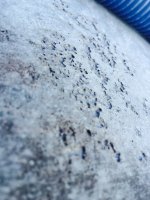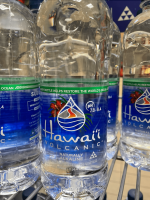- Nov 12, 2017
- 12,681
- Pool Size
- 12300
- Surface
- Plaster
- Chlorine
- Salt Water Generator
- SWG Type
- Pentair Intellichlor IC-40
To be clear, dosing above target increases chlorine loss to the sun. So theoretically, doing so will cost you some chlorine. Dosing "up," as you put it, would not be wasting chlorine in the same way. But you risk an algae event by doing so. Which would necessitate a SLAM, which guaranteed would "waste" way, way more chlorine than this "over-dosing" strategy would. So it's a trade off. What's your preference? What's your risk tolerance?
If your pool cooperates, you'd dose to the high-value of your target range, and your pool would only drift down to the low value of your target range. You just have to experiment to see if it'll do that. And even if it won't in mid-summer, it might in spring or fall. Yep, even after learning all you learn about your pool, it'll all change with the seasons! It's a learning curve process. But I can say with some authority, you're doing great and better than most.
Based on my experience with my pool, I know that at mid-summer my pool will turn on me around FC2.5. So I strategize my FC dispensing based on staying well away from 2.5 at all times. You don't know what that number is for your pool yet, which is why I suggested you play it safe. As you learn your pool, you'll adjust your MO to fit your pool and your maintenance "tolerance."
If your pool cooperates, you'd dose to the high-value of your target range, and your pool would only drift down to the low value of your target range. You just have to experiment to see if it'll do that. And even if it won't in mid-summer, it might in spring or fall. Yep, even after learning all you learn about your pool, it'll all change with the seasons! It's a learning curve process. But I can say with some authority, you're doing great and better than most.
Based on my experience with my pool, I know that at mid-summer my pool will turn on me around FC2.5. So I strategize my FC dispensing based on staying well away from 2.5 at all times. You don't know what that number is for your pool yet, which is why I suggested you play it safe. As you learn your pool, you'll adjust your MO to fit your pool and your maintenance "tolerance."
Last edited:




